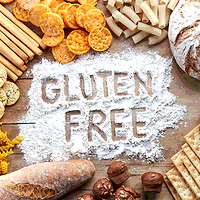Ensuring the Safety of Gluten-Free Menu Items with Written Documentation

While standards such as Hazard Analysis and Critical Control Points as well as local and state regulations outline the procedures for safe food handling for restaurants and other foodservice establishments, these standards do not include guidance for producing the gluten-free food offerings that appear on restaurant menus. The reason may be that gluten-free food products are still regarded as something of an option or a specialty, although gluten is a serious concern for people with celiac disease, as well as for those who are sensitive to it or simply trying to reduce the amount of gluten they consume.
As gluten awareness and the demand for gluten-free foods has grown over recent years, many foodservice providers have begun offering gluten-free menu items. Organizations like nationwide quick service restaurants and large restaurant chains likely have documented procedures for processing and delivering the gluten-free items they offer, just as they have rules for other menu specialties. However, for the local independent restaurant, the detailed how-to instructions behind its gluten-free recipes often exist only in the mind of the chef or the owner—the same individual who might also serve as the restaurant’s food safety manager. Unfortunately, this lack of documentation has the potential to be detrimental to their reputation and their business.
Write It Down
Because restaurants are fast-paced environments, it shouldn’t come as a surprise that operational policies and procedures are often conveyed “on the fly” to employees by the chef or owner. While the lack of formal procedures in many restaurants is understandable, putting procedures in writing so that they can be carefully followed is a best practice that should be in place in every establishment offering gluten-free or other allergy-safe dishes. While documenting how to cook and serve a gluten-free pizza, for example, will require a little time, it is time well spent to avoid the risk of a patron becoming sick, as well as providing a solid resource for employee training and transparency with customers.
Restaurants don’t need to follow a particular format or complete formal paperwork to put these procedures in writing. The rules for cooking and serving gluten-free foods can be written on the restaurant letterhead or even lined notebook paper. The important thing is to write down the procedures that ensure there is a plan in place. That way, if the chef or owner isn’t available for some reason, employees can refer to the written document to properly prepare the gluten-free foods the restaurant offers.
One fairly simple way to get procedures in writing is to have an employee shadow the chef during a normal day and write down what the chef is doing as he or she does it. The employee can note the important points, such as the fact that the pots and pans used for gluten-free preparations are kept separate and are stored on a top shelf to avoid the potential for cross-contamination. With written procedures in place, and placed in their own binder, all restaurant employees can access them and take the necessary steps to be confident that what they’re serving is, in fact, gluten-free.
Another Alternative
Another excellent way to develop written policies and procedures to ensure safety with gluten-free preparations is to work with a competent third-party certification organization. Third-party certification requires that the agency’s representative reviews a restaurant’s unique environment and establishes the written documentation for best practices for safe restaurant operations. This type of certification provides assurance to patrons that the restaurant is committed to the integrity of its offerings and will follow the same practices and procedures with every gluten-free dish it prepares. Certification also helps to support and facilitate the ongoing training of front and back of the house staff. The certification process can be accomplished in as little as 6 weeks.
Establishing written practices and procedures for the safe preparation of gluten-free dishes can reduce the risk of mistakes occurring as a result of inconsistent practices, as well as demonstrate a restaurant’s commitment to the well-being of each of its customers. Whether a foodservice provider chooses to develop its own documentation or works with a third-party certification organization, standardizing procedures and making these available in a written format ensures that when a restaurant promises “gluten-free,” that is exactly what it’s serving.
Lindsey Yeakle, gluten-free food services quality control manager for the nonprofit Gluten Intolerance Group, has a culinary history working at four-star and four-diamond rated restaurants. For more information, visit www.gffoodservice.org.
Looking for a reprint of this article?
From high-res PDFs to custom plaques, order your copy today!








